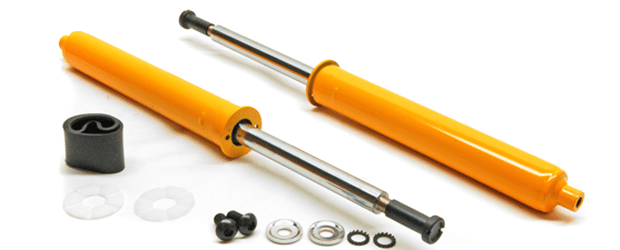Author: Dung Nguyen | IG: grip240sx
Any unusual sounds coming from your vehicle should be checked out immediately. If knocking sounds are coming from your car (or if you see sparks), it could due to vibrating or dragging exhaust component, such as a muffler. Exhaust hangers are what holds the exhaust parts onto the body of your car. Since the exhaust system is so close to the ground, hangers can become damaged or torn when the car is moving at high speeds. Harsh conditions, daily wear, and extremely temperatures may also cause the hangers to tear or stretch, detaching the exhaust from the body of the car.
How can you tell if that clunking noise is a broken exhaust hanger? Of course, you can ask your mechanic to take a look, but if you are more of a DIY’er, you can take a look under the car yourself. While putting your vehicle on a lift is the best way to get a clear view, checking for damaged or worn hangers and replacing them can also be done using jacks and jack stands.
There are many different styles of hangers available. From rubber donut shaped (common with newer vehicles), to metal brackets, to extra stiff polyurethane adjustable hangers, all exhaust hangers serve similar purposes of holding up your exhaust system and keeping them from vibrating.
MATERIALS:
Exhaust Hanger(s)
Car Jack and Jack Stands
Mechanic’s Creeper
Pry-bar or Screwdriver
Safety Glasses
Wire Cutters
Lubricant (Optional)
Step 1 – Jack up your vehicle and use jack stands to secure the car in the lifted position. Use your car manual to reference the recommended jack points to support your car. Use high quality jack stands for safety.
Step 2 – Locate the hangers underneath your car. Since some hangers may be slightly torn and extremely damaged, be extra careful when checking, as tugging on it forcefully may cause it to tear completely and the exhaust may fall. Decide which hangers need to be replaced and prepare to remove them.
When replacing a damaged hanger, it may be beneficial take a little more time to replace them all. Each vehicle usually uses three to four hangers to hold up the exhaust components and the hangers are fairly inexpensive.
Step 3 – Put on safety glasses and pry or cut off the hangers. If you are having a hard time prying off the hangers, you can use grease or tire shine (our special trick!) to help ease the hangers off. You can use a lubricant when installing the hangers as well, to help slip the hanger onto the mounting points.
TIP: Use a jack to hold up the exhaust while removing the hangers. This will stop the exhaust system from dropping when removing the hangers. It can also support the exhaust when installing the new hangers.
Step 4 – Install the hanger by hand or use the pry bar or screwdriver for extra leverage. Slip hanger holes onto exhaust and car mounting points. If you are replacing all of the hangers, it may be helpful to use the jack to keep the exhaust in place while installing the new hangers.
Step 5 – Adjust hanger mounting positions if needed and check if exhaust is secure. This can be done by tugging on the exhaust components. There should be little to no play. Take a test drive and check for any vibrating noises.


